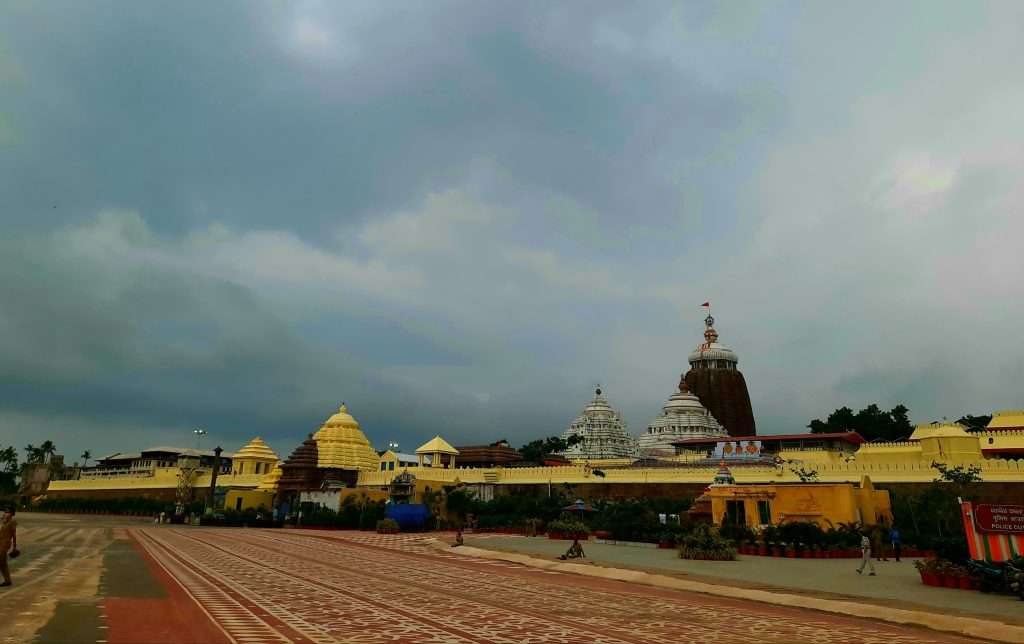Puri: Shree Jagannath who is the Lord of the Universe is worshipped as Daru Devata (wood-incarnation) in Puri Srimandir.
The Lord is known all over the world as Daru Brahma and is addressed in thousand names by the devotees. So the learned have accepted Daru Brahma as the puranapurusha (a progenitor, God) and worship Him with deep devotion. He is a symbolic deity and in the Veda Jagannath is described as chaturddhamurtti (four fold incarnations) i.e. Balabhadra, Subhadra, Jagannath and weapon Sudarshan.
Hence, Lord Jagannath is above all religious concepts. Originally the name of Jagannath is not mentioned in the Vedas but mentioned in the Tantric scriptures. Moreover the system of idol worship is not there during the Vedic age, though the names of many Gods are mentioned in it. They are worshipped only through Yajna (a religious offering).
However, in tantric method of worship an image is very much essential which has resulted in the evolvement of the tradition of idol worship in Srimandir. Scholars said that this is nothing but a tantric method while the side deities (parswa devatas) in Srimandir are the clear symbol of the tantric concept. Lord Jagannath is worshipped on Vairava Chakra and known as Vairav.
The offering to Him is Mahaprasad which is a tantric word. Words like Nirmalya and Kaivalya are also tantric words. According to the tantric theory Asta Shakti (eight powers) like Mangala, Vimala, Sarva Mangala, Ardhashosini, Alamchandi, Kalaratri, Marichika, Chandarupa are the eight powers placed in the south east, west, north west, north, north east, south, east and south west direction respectively of Jagannath temple and safeguard the temple.
Similarly, Kapalamochana, Jameswar, Isaneswar, Markandeswar, Bileswar, Nilakantha, Bateswar and Mahesha (Loknath) are the eight Rudras protecting the temple. Jagannath is regarded as Vairav and Vimala the Vairavi.
The paintings of Dasha Maha Vidya, Vagadarshini, Chhaya Maya and Kali in Vimala temple are the Tantric Devis. One can find images of many tantric side deities displayed in temple enclosure and outside.
Just like a tanric deity on a Yantra (an implement), Balavadra, Shuvadra and Jagannath are placed on the Tara, Bhubaneswari and Shyama Yantra respectively, inscribed on Ratna Singhasan.
There are mentions of Bamachar method of tantric worship in the ritual of SriJagannath. Accordingly materials used in Panchama Kara sadhana in tantric practices like wine, fish, meat, maithuna (sexual union) and mudra (gesture) are offered to the deity.
The Lord is also offered nutmeg juice and coconut water in bell metal plate, black gram (Biri) cake, ginger, raw sugar, half naked dance of Devadasi and yoni mudra exhibition are the symbol of Panchama Kara that are offered to Jagannath.
A special preparation of rice and spices called Mendha Mundia Khechudi is used in the adoration of the deity in the specific Thali (metal plate).
Legend had it that in the past the head of a sheep has been offered to Jagannath. All the above facts justify that tantric concept in the temple service are pre-eminent.
Similarly, the most important ritual, Nabakalebara the change to new idol is also influenced by the same concept.
As per Hindu religious tradition, the same ritual is observed in Joda Ashadha (a joint third Indian month, June-July), usually called Malamasa (an intercalary month)/Adhimasa (an excess month). The same month is narrated in Hindu scriptures as Purusottama month.
PNN
